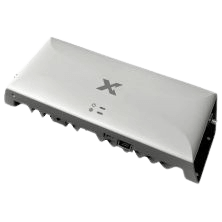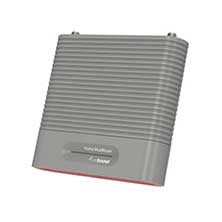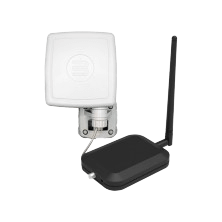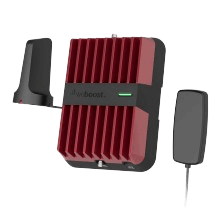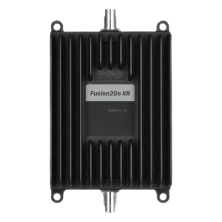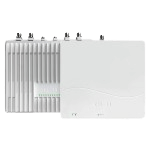Why is My Cell Service So Bad? Causes & Fixes
Understanding What Causes Bad Reception
Dropped calls. Missed texts. That spinning wheel when you’re trying to send a photo. One second, you’re using your phone like normal, the next you’re pacing around like it’s 2006, holding your phone toward the ceiling just to get one more bar.
If this sounds familiar, you’re not alone. Poor signal is one of the most common complaints people have with mobile carriers today.
Let’s break down why your cell service might be failing you and what you can do about it, without wasting time on things that don’t work.
Take advantage of our system design and installation services. Learn more or call us for a free consultation: 1-800-969-8189.
Top 8 Reasons You Have Bad Signal
1) Building Materials are the Problem
Modern construction uses building materials like concrete, metal, and Low-E glass. These materials are great for stability and insulation, but not for in-building cellular connectivity. Metal can block out signals completely, while materials like drywall might just weaken your reception.
If your phone signal works better near a standard window or outside your home, chances are the building itself is interfering.
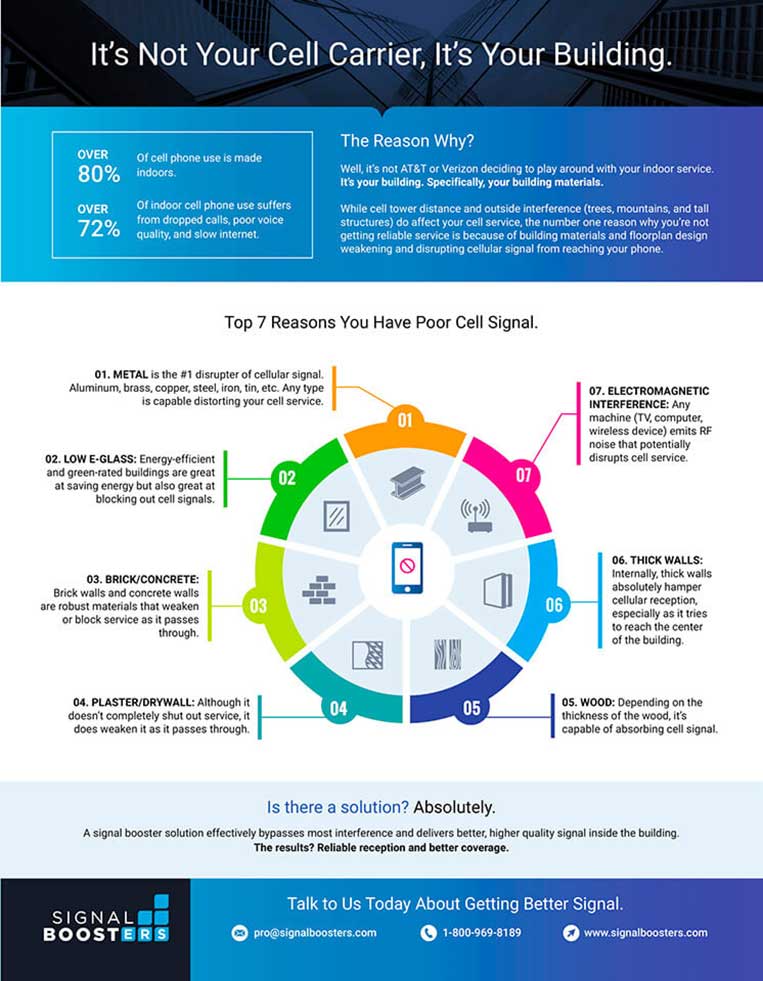
2) You’re Too Far From a Cell Tower
If you expect to receive any signal at all, you must be within range of your carrier's closest cell tower. Signal strength drops quickly the farther you are from the tower. This is especially common in rural areas, along highways, or even in parts of a city with low tower density.
3) Natural Obstructions Are Blocking Your Signal
Much like the many man-made structures that can interfere with cell reception, Mother Nature’s creations can be your reason for bad cell reception. While mountains and hills make for lovely views, they are potential signal killers. Even trees are known to cripple cell signals.
4) Carrier Frequency Limitations
Not all cellular services are created equal. Cellular networks use different frequency bands, and some of them just don’t travel well through walls or over long distances.
High-Band 5G, for example, offers lightning-fast speeds but struggles to penetrate buildings or cover large areas. That’s why your phone might show full bars outside, but immediately drop service when you step indoors.
5) Inclement Weather is Temporarily Hurting Signal Reliability
Storms, heavy snow, humidity, and thick fog can disrupt signal transmission. This is because the water in the air reflects, refracts, and absorbs radio waves, weakening signal strength and reliability.
It’s not just your run-of-the-mill rainy day that interferes either: add cosmic events to that list, too. In rare cases, solar flares have been known to produce shock waves that disrupt the Earth’s magnetic fields, and mess with your cell signal.
These weather-related issues usually don’t last long, but they can explain why your signal is suddenly unreliable during a specific day or time.
6) A Congested Network
Too many users on the same network can slow everything down. Cell towers have capacity limitations. This commonly happens at concerts, sports events, or even during peak usage hours while relaxing at home. When possible, you can try switching to WiFi for a faster, more stable connection.
7) Low Phone Battery
While many bad cell signal culprits are beyond our control, there is one small controllable action that can help stretch your connection. That is to simply keep your phone charged.
A low battery can cause your phone to reduce its transmission power, making it harder to maintain a connection. This will result in dropped calls and slower data speeds, especially in weak signal areas.
8) You’re Blocking Your Phone's Antenna
Cell phones use small antennas built into the hardware to communicate with nearby cell towers. Blocking them can affect your connection. Be mindful of the way you hold your phone to avoid blocking the antennas. If using a bulky phone case or even one built with metal, removing it may help instantly improve your connection.
Ways to Improve Bad Cell Signal
There are some quick fixes you can try right now that work best when your signal is only occasionally bad, or when you're in a pinch. Try these out:
- Toggle Airplane Mode: This refreshes your connection to the nearest tower and often resolves minor signal hiccups. It’s like a mini reboot for your cellular network.
- Enable WiFi Calling: If you have stable WiFi, most carriers let you call and text without relying on cell signal. Just make sure it’s switched on in your settings.
- Go Outside: As mentioned, buildings can block signals. While inconvenient, in many cases, stepping outside (on your porch, balcony, etc.) is a quick way to maintain a phone call.
- Remove Your Phone Case: Some thick or metallic phone cases can interfere with the device's built-in antenna. Removing the case and any additional phone accessories may give your signal a slight boost.
If those don’t help, it’s time to consider longer-term solutions. When your signal is consistently weak, especially indoors, nothing beats a cell phone signal booster. They capture existing outdoor signal (even if it’s faint), amplify it, and rebroadcast it inside your home, vehicle, or office. For more information, see How Signal Boosters Work.
Unlike temporary tricks, boosters work 24/7 and can drastically improve voice quality, data speeds, and connectivity across all major carriers. Here are our top-performing boosters:
Best for Large Homes
Need to cover a large house or multi-level home with a strong signal? The Cel-Fi GO G41 offers industry-leading gain (up to 100 dB) for one carrier at a time, maximizing 5G and 4G connectivity even in weak signal environments. It offers ideal coverage for indoor spaces up to a whopping 20,000 sq ft.
- Works with one carrier (compatible with all major US carriers)
- High-performance signal strength
- Designed for larger indoor areas with flexible antenna setups
Best for Multiple Room Coverage
The name says it all. The weBoost Home MultiRoom is perfect for small to medium-sized homes where signal drops in specific rooms, boosting coverage for up to 5,000 sq ft under ideal conditions.
- Boosts voice and data on all major U.S. carriers
- Easy DIY installation
- Great option for homes with consistent signal issues in specific areas
Best for Renter-Friendly Installation
Living in an apartment or rental unit? The Signal Boosters Apartment Kit is built with non-invasive installation in mind: no drilling, no professional wiring required.
- Installs quickly without modifying walls
- Includes all hardware and easy-mount options
- Enhances connectivity in one to two rooms.
Best for Passenger Vehicles
The weBoost Drive Reach is weBoost’s most powerful in-vehicle cell signal booster for cars, SUVs, trucks, and minivans. Features increased uplink than previous generations, users can get signal that is 2x farther from towers for twice the signal strength. Dropping calls and losing navigation connection will all be a thing of the past while driving on remote roads or highways.
- Great for travelers, rideshare drivers, and remote workers
- Multiple antenna configurations for different vehicle types
- Easy to move between vehicles if needed
Best for Trucks
Built for the road, the Fusion2Go XR MST/FST is optimized for specific truck models like Ford and Chevy pickups, Jeeps, and Broncos. Each kit comes with custom installation hardware made to fit these vehicles, making setup easier and more secure. It delivers strong, reliable performance, ideal for long drives or remote work areas where coverage typically drops off.
- Heavy-duty components built for rough environments
- Powerful amplification to overcome spotty reception in rural areas
- Streamlined installation for trucks
Best for Commercial Applications
For warehouses, office buildings, and enterprise-level spaces, the QUATRA 4000c offers unmatched coverage and intelligent network monitoring. It’s a hybrid DAS (Distributed Antenna System) that delivers up to +100 dB gain without the cost or complexity of traditional DAS installs.
- Scalable solution for up to 200,000 sq ft
- Centralized management via the WAVE platform
- Ideal for multi-carrier connectivity in commercial settings
Let’s Fix Your Patchy Cell Signal, For Good
Whether you're troubleshooting a tricky dead zone at home or looking for a long-term fix for your business, Signal Boosters is here to help. We’re here to assist with any questions you may have. Contact us today via phone (1-800-470-6777) or email (sales@signalboosters.com).
Frequently Asked Questions
Cell signals can become weak or drop off completely without warning. Probable causes include building material, cell tower distance, harsh weather, congested network, etc. Try contacting your carrier if you can’t identify a cause from our list above.
It depends. Some 5G signals are fast but have limited range and poor penetration through buildings. Others (like low-band 5G) offer wider coverage. Coverage quality varies by carrier and location.
Yes. If there’s even a faint signal outside your home or vehicle, a booster can amplify it and bring it inside, improving call quality and data speeds. Give us a call at 1-800-470-6777 for expert recommendations.
Interested in Learning More? Check Out Our Cellular Info Hub / WiFi Info Hub


